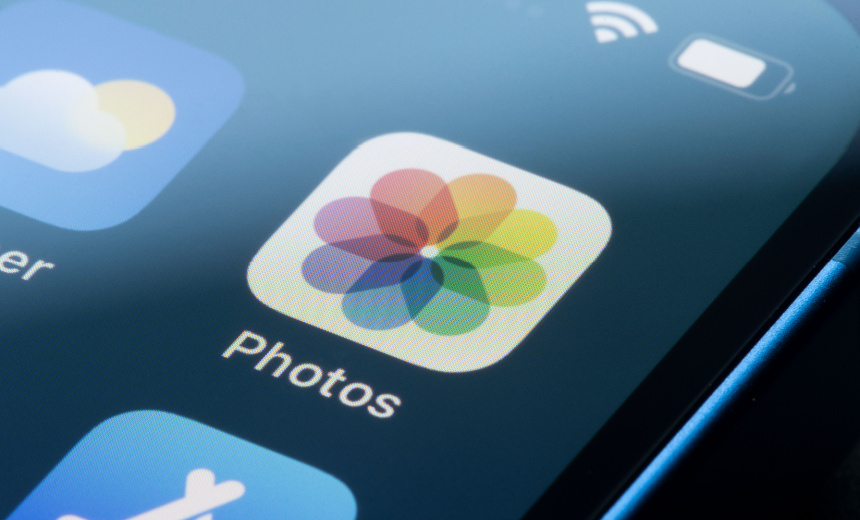Artificial Intelligence & Machine Learning
,
Governance & Risk Management
,
Next-Generation Technologies & Secure Development
iPhone Maker Introduced Feature Without Explicit Consent

Apple’s artificial intelligence-led photo analyzer is raising privacy concerns months after the company appears to have enabled the feature by default.
See Also: AI Surge Drives a 40-1 Ratio of Machine-to-Human Identities
Enhanced Visual Search automatically identifies landmarks by scanning user images stored in the Photos app, likely introduced with the iOS 18.1 and macOS 15.1 in late October. It uses a combination of on-device machine learning and encrypted cloud-based processing to extract numerical representations called vector embedding that may or may not constitute possible landmarks. The data is encrypted with homomorphic encryption and transmitted for further processing to Apple’s servers without revealing the information it contains. A resulting landmark label will then be sent back to the device, encrypted.
Apple said in November that the privacy-preserving techniques it uses, including differential privacy and the use of OHTTP relays, mean that user data is anonymous. So neither Apple nor its cloud partner Cloudflare can see the actual image data or any associated metadata when processing.
But the feature has drawn criticism for being active by default. Johns Hopkins University cryptography professor Matthew Green said the approach of learning about new features after it becomes active on the device erodes trust.
Others, such as software developer Michael Tsai, argue that the feature is even less private than Apple’s controversial and abandoned CSAM detection plan, which only looked at photos uploaded to iCloud and not all the photos. “Apple is being thoughtful about doing this in a (theoretically) privacy-preserving way, but I don’t think the company is living up to its ideals here,” he said.
“Not only is it not opt-in, but you can’t effectively opt out if it starts uploading metadata about your photos before you even use the search feature. It does this even if you’ve already opted out of uploading your photos to iCloud,” he said.
Apple has not commented.
“My objection to Apple’s Enhanced Visual Search is not the technical details specifically, which are difficult for most users to evaluate, but rather the fact that Apple has taken the choice out of my hands and enabled the online service by default,” said software developer Jeff Johnson.
